Until I came to Hong Kong I thought debenture was a fancy word for pretty-young-things’ first grown-up party. It is only when I arrived here that I found out otherwise. Elite schools use debentures to borrow for free from wannabe students’ parents, and exclude the hoi-polloi. Try googling debenture and you’ll get sent straight to www.topschools.hk. There’s a thriving secondary market in debentures – prices vary from $25,000 for the not so grand schools to $10million for the most sought after. This is on top of the annual fees of around £15k.
As the photo to the left shows education is where the rat race starts. And as the second picture reminds us there’s no need to wait till a kid gets is at school to start tutoring. Kindergarten kids can cram in another language while they are being potty-trained. (To be fair the nursery did also have some very nice climbing frames).
Education could be the great leveller, but money is able to frustrate such egalitarianism.
Why are so many expats, and wealthy local people, prepared to pay so much to avoid the local schools? Anyone who’s watched BBC’s fascinating reality show on Chinese education applied to UK schools knows that Chinese kids do incredibly well in international student comparisons. But ambitious Chinese aren’t interested in learning the syllabus. They want their kids to be taught in English and gain internationally recognised qualifications rather than the HK Diploma of Secondary Education so they have an exit strategy to a better life via a foreign university. A quarter of the state schools language of instruction is English but entry is highly competitive – and the educational regimes hellish with too much homework, boring rote learning and a lack of opportunity to develop creative skills.
It’s incredibly competitive getting a place in one of Hong Kong’s seven public universities. Government funds just 20,000 new enrolments per year, far less than the demand from the 100,000 young people that will reach 18 this year. Given that so many young Hong Kongers want to go to university many have no choice but to attend HK’s private universities or go overseas.
But it’s not just education where manufactured scarcity is driving up prices. You have similar secondary markets for membership of the Hong Kong’s elitist private clubs. Getting hold of a membership for Clearwater Bay Golf Club – the swish-est in the territory – will set you back a million sterling. By way of comparison the cost of private clubs in London is around £1500. In UK allocation is by queue, or through obscure nomination procedures.
Large plots of new space has to be created either as newly manufactured islands or reclaimed shoreline. It is used to site airports, motorways and high-end offices. No-one is likely to set up a new golf club or cricket club anytime soon. Instead membership to the existing ones is traded. The private clubs are great places to entertain clients or take the family on Sundays when the helper gets her day-off.
Uber has been in the Hong Kong news the last week after the police arrested several drivers for providing taxi services without a permit, and raided Uber’s offices taking several staff away for questioning. The number of red taxi permits in Hong Kong has remained fixed for twenty years. This is despite souring demand through increase in tourism and people’s income. This means the costs of the permit has now risen to over £600,000 and there is such a healthy secondary market in the permits. Investors treat them as another asset class to buy and sell.
So what else have I been up to? I took my bike on the ferry at Sai Wan Ho to Kowloon a few weeks ago. I had a vague ambition to see some of Kowloon’s more spiritual and ancient sites. Weaving through traffic and carrying your bike over six lane motorways wasn’t the most relaxing way of travelling but it was fast and exhilarating. Stupidly I had picked the hottest day ever recorded, in some parts of HK the temperature hit 38°C.
The most photogenic place was the Nan Lian Garden near to Diamond Hill MTR. It looks ancient but was actually created from a brownfield site in 2006. The stunning buildings use traditional wood construction techniques. You can, for an hour or two, from the right angle, totally forget you are in Kowloon surrounded by 2 million people in 50 square-km. The buildings are held together using clever joints instead of nails. There is a small exhibition in one building showing models of such traditionally built temples from the Mainland, some are almost a thousand years old and six or seven storeys high.
The garden was designed and is operated by the Chi Nin nunnery, which is situated right next door. Again this seemingly ancient building was constructed in the 1990s. There are some terrific Buddhas in the shrine rooms but no sign of nuns and little evidence of anyone practising religion.
Here is a photo is of the stain-glassed roof of Plaza Hollywood. The mall is over the road from the nunnery. Thousands of retail devotees take part every week in their weekly pilgrimage to the 130 retail outlets. Shopping must surely be Hong Kong’s truest religion.
A few miles from Diamond Hill is the fascinating Kowloon walled city. This tiny patch of space, just 2.6 hectares, used to be a Chinese enclave following the leasing of the New Territories in 1898. For a few years the Chinese maintained a garrison inside the walled city in the 19th Century but they very soon pulled out and the tiny plot of land became stateless and a safe haven for triads, drug manufacture and even some legit manufacture
(apparently a big centre for making toilet plungers!). Its population mushroomed and tens of thousands lived there. In 1994 the British Government agreed to sort it all out and the buildings were levelled and the land converted into a park. A few of the oldish
buildings still stand but they have no roofs, which made them less than ideal to hide from the 34°C. Memo to myself – check the weather forecast next time I go cycling.

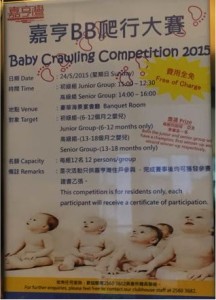
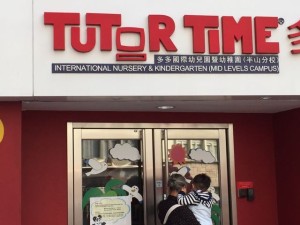
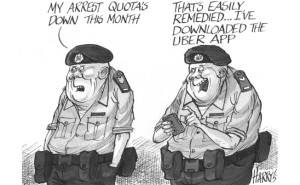
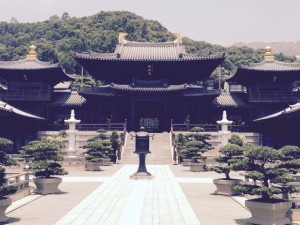
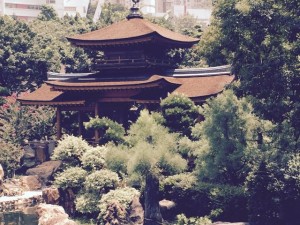
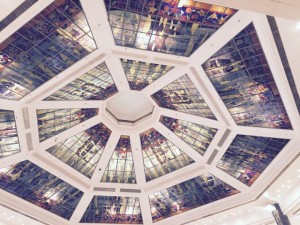
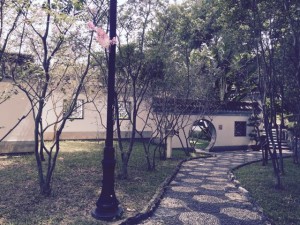
Only 34 degrees? Sounds like a pleasant spring morning. I spent three months in Lahore in 1988 when it was over 40 degrees. I had no air conditioning. I was supposed to be learning urdu, but in fact I went and sat all day in the British Council library, because that was air conditioned. Which explains why I can only say 5 words in Urdu.
Hello there! Would you mind if I share your blog with
my myspace group? There’s a lot of people that I think would
really enjoy your content. Please let me know. Cheers